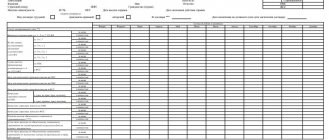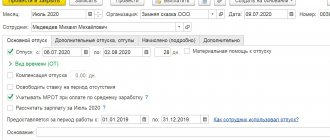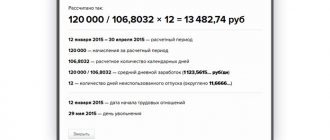In recent years, increased attention has been paid to demography in our country, because its future power and prosperity directly depend on the birth rate and population growth. Concern for additional provision for women, the time given for development, gestation and nursing of the born child will have an impact on its further health and development.
Extension of sick leave for pregnancy and childbirth by 16 days
About sick leave for pregnancy and childbirth
In 2021, additions and changes were made to the legislation of the Russian Federation to increase and expand assistance to families with children. Articles 255 and 266 of the Labor Code of the Russian Federation provide for the provision of maternity leave to women.
It is the responsibility of each manager to provide a woman who is about to give birth to a child with leave within the time limits required by law.
Child care time is divided into periods:
- maternity leave;
- additional leave for complicated childbirth;
- care leave until the child reaches 1.5 years of age;
- parental leave until the child reaches 3 years of age.
Note ! These holidays are paid on the basis of separate regulatory documents.
If a woman works while carrying a child, she is granted maternity leave - 70 days. The date is set by the decision of the gynecologist of the Women's Consultation on the expected date of birth of the child at 30 weeks of pregnancy. At birth without postpartum complications, a woman is entitled to another 70 days to restore her health and care for her baby. But childbirth is a difficult, difficult procedure for mother and child, which often involves medical complications and injuries. In such cases, the woman will have 16 days added to her maternity leave, making it 86 days in total.

Article 10 of Federal Law No. 255
If a happy mother’s doctors, using an ultrasound, have determined that two or more fetuses have been conceived, then maternity leave is extended to 84 (70+14) days, and at their birth by 110 (70+40) days.
Note ! Unfortunately, there are many cases where pregnancy and childbirth occur with deviations and are difficult for mothers and children to tolerate. They often end in a major operation or caesarean section, which can cause additional harm to the woman and prolong her recovery period.
A sick leave certificate issued by a medical institution is the basis for payments for all days due for pregnancy and postpartum leave, including additional days for complications. The amount of payments depends on the average salary calculated from the income received over the last two years.
Attention:
- sick pay for pregnancy and childbirth should not be lower than the minimum wage at the time of accrual.
- in accordance with Art. 217 of the Tax Code of the Russian Federation, sick leave and other payments for children are not subject to taxes and fees.
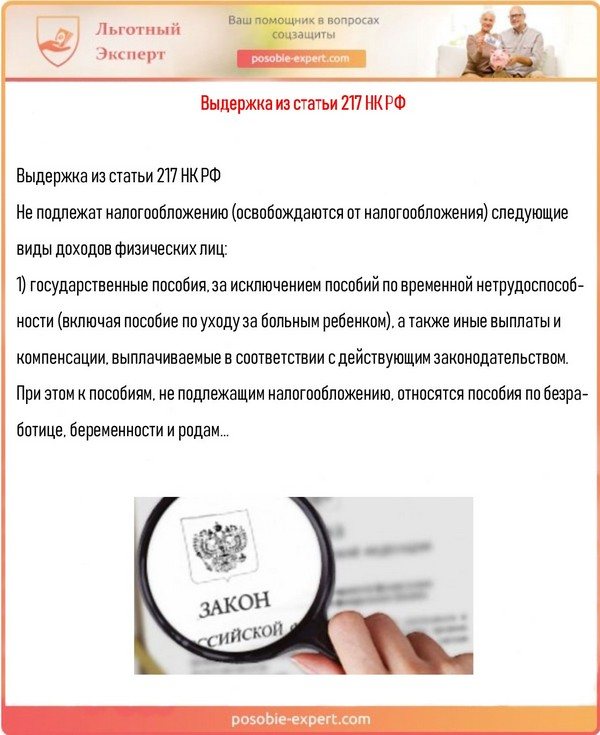
Excerpt from Article 217 of the Tax Code of the Russian Federation
If a woman voluntarily works until the birth of the child, without serving the required leave after the birth of the child, this is not prohibited by law and only the actual time spent on sick leave is paid.
Note ! During pregnancy, a woman must be released from hard work and transferred to light work with mandatory retention of earnings calculated on average.
For the entire period of maternity leave and time to care for a child, the employee retains his job. Every month the employee is paid a child benefit established by the state. The first 1.5 years of child care are included in the continuous insurance period of the Pension Fund.

The first 1.5 years of child care are included in the insurance period
All women giving birth have the right, in the event of any complications, to additional maternity leave - this is provided for by law, and few managers will decide to violate them.
Note ! Women's rights are protected and protected by the state.
Reasons for extension
- Birth of two or more babies;
- Eclampsia, nephropathy and preeclampsia caused by pregnancy and (or) childbirth;
- Carrying out operations during childbirth: caesarean section, fetal rotation, fetal destruction surgery, and so on;
- Secondary anemia caused by blood loss;
- Tissue rupture of at least degree 3;
- Purulent mastitis, thrombophlebitis, endometritis, various types of inflammation caused by childbirth;
- The presence of extragenital diseases, as well as diseases of the heart and cardiac vessels in the parent, which she had before pregnancy;
- Premature labor and/or birth of a premature baby.
To extend sick leave, the medical institution issues a new certificate of incapacity for work, in which it indicates that it is a continuation of sick leave. To do this, in the line “Cause of disability” the digital designation “05” (sick leave for pregnancy) and “020” (extension of sick leave) is placed. An independent, separate certificate of incapacity for work is not issued by the medical institution. However, if the woman was nevertheless issued a new sheet without indicating that it is a continuation of the previous one, the employer must also accept it for credit.
This is important to know: How to apply for and receive sick leave for child care
What is included in the concept of complicated childbirth and how are they interpreted by doctors and legislation?
The Ministry of Health of the Russian Federation, in instruction No. 01-97, determined the procedure for how and by whom the issue of providing additional leave in connection with postpartum complications is decided. It lists possible complications after which the mother in labor needs additional days to recover her health.
All issues related to the provision of additional leave are assigned to the commission of the Maternity Hospital (medical institution), consisting of the chief physician, the attending physician and a specialized physician according to the type of complication.
Note ! The commission examines how the birth took place and how complications affected the postpartum condition of the mother and child.
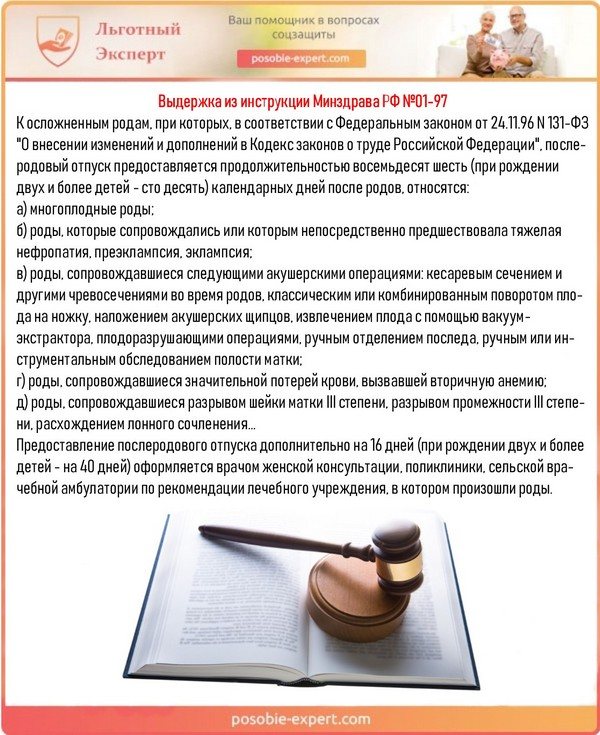
Excerpt from the instruction of the Ministry of Health of the Russian Federation No. 01-97
What does the list of postpartum complications include?
Childbirth is always painful, and it is a difficult ordeal for a woman and her baby. Much depends on physical health, the absence of chronic diseases, as well as the readiness of the mother in labor to give birth to a child. Experienced gynecologists and obstetricians help a woman during childbirth, take all measures to prevent complications, but sometimes they are simply objective. Additional sick leave for pregnancy and childbirth (BIR) for 16 days is given for recovery after major operations and postpartum pathologies.
Postpartum complications can be divided into:
- pathological childbirth;
- prenatal abnormalities;
- birth injuries and pathologies;
- postpartum illnesses and complications;
- multiple pregnancy.

There are several types of postpartum complications
Pathological birth
What is considered a pathological birth:
- Complicated childbirth entails the need for planned and sometimes emergency surgery to remove the baby. This operation is called a “caesarean section”. The woman will need additional time to recover from deep anesthesia, to protect herself while the internal and external sutures fuse.
- Before giving birth, there may be a need for another surgical intervention, episiotomy, cutting the walls of the vagina to facilitate the birth of the child naturally. The patient needs additional time for the incisions to heal and heal.
- Surgical methods also include manual separation of the placenta in cases of its fusion with the walls of the uterus. This is a painful procedure and is difficult for women in labor to endure.
Multiple pregnancy
When a woman is pregnant with two, in rare cases three or even more babies, the birth takes place in a tense environment for the woman in labor and for the obstetrician. In such cases, caesarean section is often used. Babies are born with low weight, weakened, and require additional care and attention. Mom needs recovery after a difficult birth. The BIR leave for such cases increases and amounts to 84 (70 + 14) before childbirth and 110 (70 +40) after the birth of children. If during the nursing process twins were not identified by doctors, prenatal leave does not increase and is 70 days.
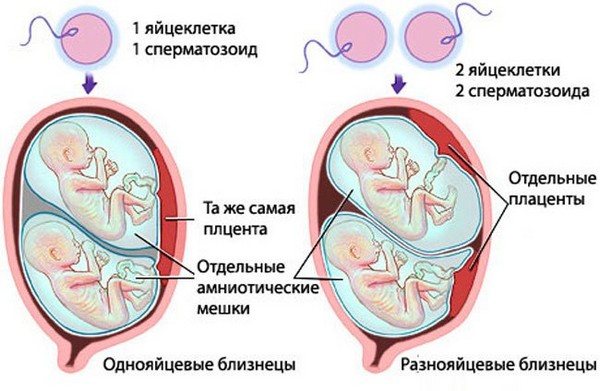
In case of multiple pregnancy, mothers must increase their BIR leave.
Prenatal abnormalities
What is considered to be prenatal abnormalities:
- Early discharge of amniotic fluid without contractions for a long time indicates a rupture of the membrane, which threatens the loss of the child, so an emergency cesarean section is performed.
- The baby may be born prematurely - a week or several months in advance - premature with low weight. The future health and life of the child depends only on medical care, medical personnel and the care of the mother.
- Post-term pregnancy lasting more than 42 weeks. If stimulation does not produce results, surgery is performed.
- Another dangerous pathology is the absence of intense contractions or a slow pregnancy. This condition cannot last for a long time and without surgery it will end tragically for the baby.
- In case of irregularities in the heartbeat or breathing problems, urgent measures are taken for surgical intervention. Otherwise, the child in the womb simply does not have enough strength to be born naturally.
- The incorrect position of the fetus in the womb will prevent it from being born on its own, and if it is not possible to turn the baby, a caesarean section is performed to save the mother and child.

If there are prenatal abnormalities, the BIR leave is increased by 16 days
Birth injuries and pathologies
Postpartum complications that affect the further well-being of the mother and newborn child require special consideration.
- When the fetus has difficulties along the way of birth with obstruction of the shoulders, it gets stuck, the obstetrician takes measures to intervene and extract with assistive means, which can subsequently affect the health of the born child.
- During a stormy, rapid birth, the placenta can prematurely exfoliate, causing prolapse of the umbilical cord - this threatens a large loss of blood in the woman in labor and hypoxia of the child. With such a pathology, obstetricians resort to emergency surgery.
- If a child swallows amniotic fluid at birth, an embolism occurs - it can cause serious consequences. Resuscitation and long-term treatment will be required.
- Lack of oxygen can cause fetal hypoxia. They are taking all measures to ensure a quick delivery; a prolonged lack of oxygen threatens the baby with irreversible consequences.

Birth injuries are also a reason to extend BIR leave
Postpartum illnesses and complications
For mothers, childbirth is also a very difficult test, which can result in the acquisition of various diseases.
- Difficult-to-stop uterine bleeding may occur. If it continues for more than 15 days, the discharge is foul-smelling, this is a signal that you should immediately contact a gynecologist so as not to trigger the condition.
- Inflammation of the uterus and endometritis are difficult for women to tolerate. Their temperature rises, the inflammatory process of internal organs begins, which will require long-term treatment.
- During pregnancy, inflammation of the amniotic membranes may occur, which is accompanied by a sharp increase in body temperature, purulent discharge from the uterus, and ichor. Urgent delivery is required.
- Breastfeeding mothers often experience postpartum mastitis, which can be caused by dangerous bacteria and microbes. With severe inflammation of the mammary gland, a woman may lose milk.
- After a cesarean section, there is a threat of inflammation of the entire abdominal cavity, which can lead to peritonitis; all organs become infected with toxins, leading to disruption of their functions.
- Infectious kidney damage, pyelonephritis, after childbirth often occurs when microbes and bacteria enter the bladder through the genital tract. Causes sharp pain and fever.
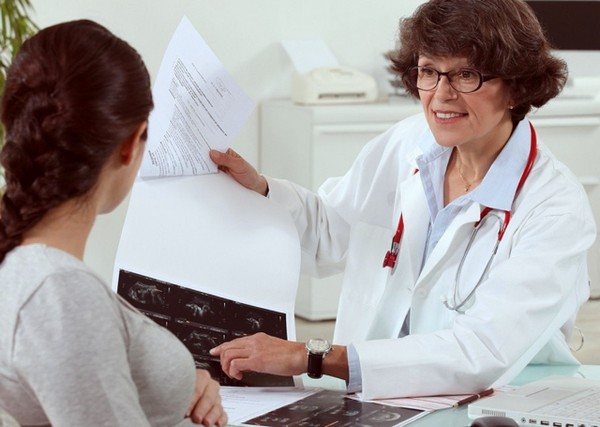
If the mother suffered in any way during childbirth, her sick leave must be extended
Grounds and reasons
Also, Order of the Ministry of Health and Social Development of Russia dated June 29, 2011 N 624n regulates the reasons for which a mother can apply for additional days of leave.
Let's look at them in more detail in the following sections.
During caesarean section
Even though surgery is a common procedure for childbirth these days, women still need a little more time to recover after a cesarean section.
In addition, after the birth of a child in this way, the mother is given stitches, which cause difficulties for the fair half of humanity.
This is important to know: How to check electronic sick leave through State Services
Therefore, a caesarean section is classified as a complication of childbirth: the woman can count on 16 days (additionally) of maternity leave.
With IVF
In vitro fertilization (IVF) is a process in which fertilization occurs in artificial conditions. The procedure is quite difficult for the female body to tolerate; complications often arise during pregnancy and childbirth.
With IVF, a woman is given an additional 16 days of maternity leave.
Multiple pregnancy
Multiple pregnancy means carrying not one child, but two or three.
The pregnancy process itself is often painful, with toxicosis and other complications, and during childbirth it is often necessary to use a cesarean section, since the birth of several children at once naturally is quite difficult.
Therefore, maternity leave is often extended:
- A woman is given 84 days before giving birth and 110 after, if she learned about a multiple pregnancy before giving birth.
- If the birth of several children becomes known during childbirth, the mother is given an additional 54 days to recover.
Other problems
Also, the duration of maternity leave increases if the following problems arise during pregnancy and childbirth:
- eclampsia, nephropathy or preeclampsia was observed while carrying a child;
- due to childbirth, the mother developed diseases: inflammation of the uterus, kidney infections, mastitis;
- childbirth was accompanied by large loss of blood;
- forceps were used during childbirth;
- the baby swallowed amniotic fluid, as a result of which he developed health problems; Moreover, if the child is in intensive care, the mother is provided with all 40 days of leave.
Is it allowed for a fixed-term employment contract?
Article 261 of the Labor Code of the Russian Federation states that if an employee becomes pregnant during a fixed-term employment contract, the employer is obliged to extend it until the moment of childbirth, as well as until the end of the sick leave, which the woman needs to recuperate after the birth of the child.
If necessary, the company must extend maternity leave if the mother or newborn has health problems. Thus, a woman is socially protected even if she is employed under a fixed-term contract.
Which paste should an employer fill out a sick leave certificate with? Information here.
About providing sick leave
During maternity leave (BIR), a woman can be issued sick leave twice:
- for the standard, prescribed period - 140 days;
- for complications during childbirth, extended for a period of 16 days or 40 days for the birth of two or more children.
Note ! BIR leave is provided to working women, students, military personnel and those registered with the employment and employment service. Unemployed people are not entitled to leave under the BIR.

Paid leave under the BIR cannot be received by unemployed women or those who are not registered with the Labor Protection Center.
The registration of a sick leave certificate according to the BIR is carried out in the antenatal clinic, where a pregnant woman initially applies, regardless of the stage of pregnancy. She takes tests and registers. The gynecologist issues a sick leave certificate for BIR for 140 days after determining the gestational age of 30 weeks.
A sick leave certificate is drawn up on a standard form at the antenatal clinic, which indicates:
- Full name of the pregnant woman;
- the full name of the institution of her place of work where the sick leave will be sent;
- code of the reason for issuing a sheet with the start date of the vacation according to the BIR and the end date;
- signature and seal.
Sick leave according to BIR
For timely payment, it must be given without delay to the employer with an application attached.
There is no developed standard form for applying for leave under the BIR, but it must include the following data:
- name of the institution or enterprise where the woman works;
- Full name of the head of this organization;
- Full name and position of the applicant;
- request for leave under the BIR for compulsory social insurance.
The date and signature of the applicant are affixed at the bottom.
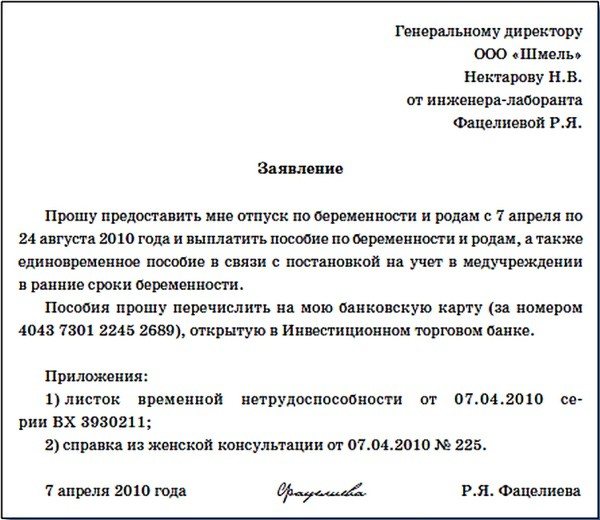
Example of an application for leave under the BIR
Note ! If the birth of a child occurred with at least one of the complications described above, then, in accordance with Article 255 of the Labor Code of the Russian Federation, the mother in labor at the medical institution where the birth took place is given a deadline for extending sick leave.
Additional sick leave is issued to extend disability leave resulting from complications in childbirth or the birth of two or more children.
An additional sick leave certificate is issued when the woman in labor provides the following documents:
- a photocopy of the passport with its original attached;
- a photocopy of the first sick leave certificate issued at the antenatal clinic;
- an exchange card issued at the antenatal clinic, in which the head physician makes a note about the completion of the birth and indicates the cause of the complication.
- a copy of the child's birth certificate.
An additional sick leave is issued on the standard form of a medical institution, which must indicate:
- Full name of the woman in labor;
- the full name of the institution of her place of work where the sheet will be sent;
- code of the reason for renewal;
- extension period with expiration date;
- signature and seal.
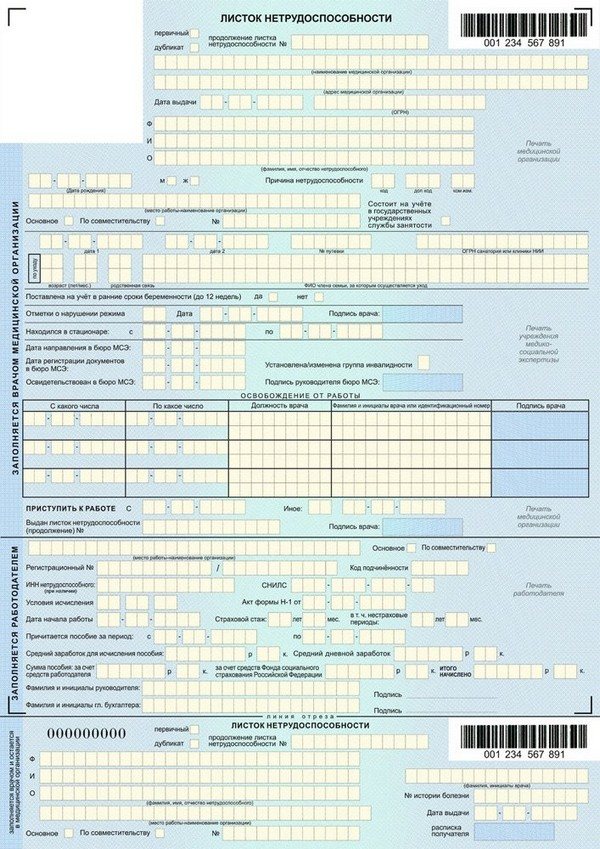
A woman is provided with additional sick leave if it is necessary to extend sick leave according to the BIR
A sick leave certificate according to the BIR is submitted to the organization with an application attached in person or through an authorized representative. You can send them by registered or certified mail, but it will take much longer. If a woman resigns of her own free will during a BIR leave or in connection with the liquidation of an organization, additional sick leave is paid by the Social Insurance Fund.
The rules for calculating payment for main and additional leave under the BIR are the same - it all depends on the average salary for the two previous years. Payments are calculated based on the dates indicated on each sick leave.
Note ! In this case, the date of birth of the child does not matter, even if he was born before or after the calculated date in the antenatal clinic.

The amount of payments depends on the average salary of a woman
Personnel issues
The personnel service of the enterprise must take into account the extension of the employee’s maternity leave in the documentation. After submitting the application, an order is issued to accrue additional days of rest, which goes through the HR department, so there is no need to additionally notify HR officers.
But there are some nuances that you need to know about.
Entering into a personal card
When an employee goes on maternity leave, the HR department must enter data into the employee’s personal card, namely, the period for which the woman left her place of work. If she is accrued additional days of rest, this is also reflected in the card.
The HR department employee must enter all the data in the eighth section of the unified T-2 form. The following information is entered there: name of the operation (extension of maternity leave), order number and number of days added.

Reflection in the accounting sheet
According to the legislation of the Russian Federation, information about additional days of maternity leave is entered into the accounting sheet (unified form T-12 or T-13). Information is entered in alphabetic (P) or numeric (14) form. In this case, the bottom lines remain blank.
The entry must be certified by the signature of the head of the enterprise or organization.
Expert opinion
Novikov Oleg Tarasovich
Legal consultant with 7 years of experience. Specializes in criminal law. Member of the Bar Association.
If pregnancy or childbirth was difficult for you and health problems arose, take advantage of the right to increase maternity leave and regain your strength.
- Due to frequent changes in legislation, information sometimes becomes outdated faster than we can update it on the website.
- All cases are very individual and depend on many factors. Basic information does not guarantee a solution to your specific problems.
This is important to know: Who pays sick leave at the enterprise
That's why FREE expert consultants work for you around the clock!
- via the form (below), or via online chat
- Call the hotline:
APPLICATIONS AND CALLS ARE ACCEPTED 24/7 and 7 days a week.
Changes in legislation
In 2021, the Russian Federation introduced significant changes in payments to women who gave birth to one or more children.
The list of financial assistance payments and their amount has been significantly changed and expanded. Payments are provided on the following grounds to support the family during the pregnancy and birth of a child:
- payment for medical registration at the antenatal clinic for up to 12 weeks;
- one-time payment upon the birth of one or more children;
- payment for maternity leave and complicated childbirth;
- payments at the birth of the first child monthly until one and a half years;
- monthly care payments from 1.5 to 3 years for each child;
- maternity capital at the birth of the second and/or subsequent children.
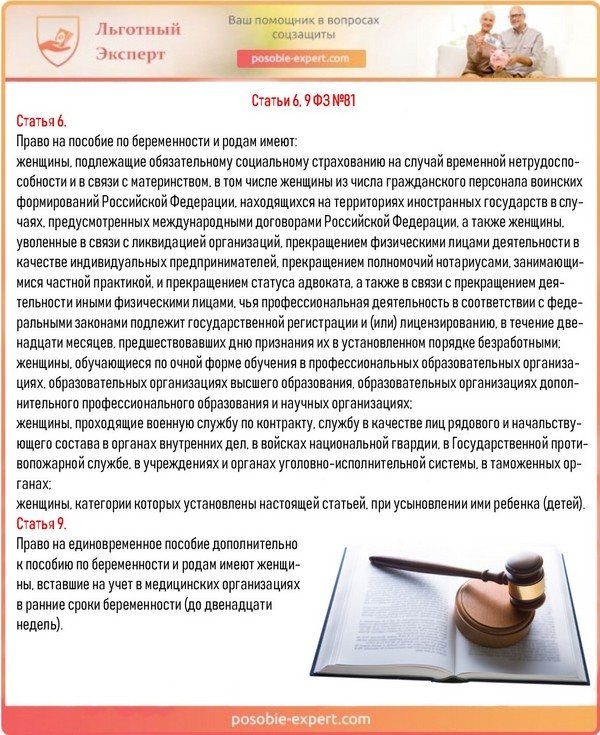
Articles 6, 9 Federal Law No. 81
Attention ! Guardians and adoptive parents have the same rights to payments and maternity leave.
Payments
Payment of maternity leave for basic and additional sick leave depends on the average monthly salary for the last two years for working women.
- If it exceeds the current minimum wage, 100% is paid.
- If it is below the minimum wage, then it is paid from 05/01/2018 in the amount of 11,163 rubles.
- For full-time students and registered unemployed women, the minimum wage is 11,163 rubles.
- For women registered at the antenatal clinic before 12 weeks of pregnancy, an incentive payment of 628.47 rubles is paid (613 rubles in 2021). It is accrued along with the main payments under the BIR.
- The amount of one-time payment for each child has been increased to 16,759.09 rubles.

Payment for maternity leave depends on the average monthly salary of a woman
In 2021, the minimum and maximum amounts of payments have been determined, which are paid at the place of work with the provision of a copy of the child’s birth certificate issued by the registry office.
| Pay | Minimum | Maximum |
| For 140 days of leave under BIR for the birth of one child | 51119 rub. | 301000 rub. |
| For 156 days of leave under BIR for complicated and difficult births | 57852 rub. | RUB 305,507.64 |
| For 194 days of leave under BIR for the birth of 2 or more children | 71994.9 rub. | RUB 417,233.86 |
| 70 days for adoption or guardianship of one child under 3 months of age | Average monthly salary in rubles. | Average monthly salary in rubles. |
| 110 days for adoption or guardianship of 2 or more children under 3 months of age | Average monthly salary in rubles. | Average monthly salary in rubles. |
The monthly benefit for a child under 1.5 years old is 40% of the average salary for the last two years. If the average family income is small, then the woman is entitled to payment according to the minimum wage at the birth of her first child.
The monthly minimum allowance for the birth of one child is 4512 rubles, for two - 6554.9 rubles.
Maternity capital is accrued at the birth of the second and/or subsequent children, and in 2021 it amounts to 453.026 thousand rubles. It can be spent:
- to improve living conditions,
- for children's education,
- for support and treatment if the child has been disabled since childhood,
- for mother's pension in future old age.
- for the construction of a house.

Maternity capital can be used for specific purposes determined by law
Rules, provision of documents and terms of payment of maternity and other payments
Receiving the required payments, with the exception of maternity benefits under the BIR, including for complicated childbirths, is possible not only for mothers, but for fathers or other close relatives who will care for the child. To do this, you need to collect a package of documents and submit it to management.
Within the statutory deadlines for payment of leave under the BIR, when all documents are provided to the organization, the administration is obliged to:
- issue an order for leave under the BIR, including additional leave for complicated childbirth;
- within 10 days, calculate all vacation pay according to the BIR, including payment for timely registration in the antenatal clinic;
- payment is made on the day the salary is received, but can be made on the next date of transfer of the total salary;
- the entire amount is accrued and paid, according to the submitted documents, at the same time.

The employer is obliged to make the required payments
To receive a calculation and receive benefits, a woman must collect a complete package of documents. It should include:
- a certificate completed by a gynecologist at the antenatal clinic confirming timely registration for pregnancy registration up to 12 weeks;
- sick leave for BIR and additional sick leave for complicated childbirth;
- application addressed to the manager;
- original and copy of the child's birth certificate. The manager has the right to verify its authenticity;
- a certificate from the place of work of the child’s father stating that he has not been paid child benefits;
- For those who are not working, but are registered with the employment and employment service of women at their place of residence, all payments are made by the Social Insurance Fund.
- Full-time students submit documents to the administration of the educational institution at their place of study.

If a pregnant woman is a full-time student, she must provide documentation to the administration of the educational institution
Advice ! Sick leave certificates must be carefully checked for correctness in medical institutions. Errors are not allowed in them.



